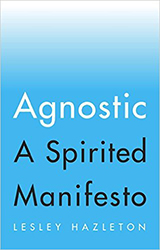En route to Afghanistan. I wish I could run this photo larger (left click to enlarge it slightly). It’s heart-breaking. Those tight rows of American soldiers in full gear, dwarfed by the cathedral-like ceiling of the plane. The accompanying report said that some in this battalion are fresh out of basic training, others starting their fifth combat tour in nine years. I stared at it for a long while, trying to pick out a particular face, to give individual identity to at least a few of these young men and women. But I couldn’t even tell who was male and who female. All identity is gone. What remains is the tension — the awareness in their bodies that at least some of them are flying toward their death. That, and the overwhelming sense of waste.
(Photo: Damon Winter, New York Times.)





A worse picture is the type they don’t publish for public consumption – a similar carrier filled with flag-draped coffins on their way home. Here in England dead servicemen and women are flown back to the RAF base at Lyneham in Wiltshire. No one organised the ritual, but a small market town called Wootton Bassett regularly comes to a halt while people line the main street to pay their respects as the sad trail of hearses passes through on their way from Lyneham to the coroner in Oxford. It is a sobering and heartrending sight and can reduce you to tears even to watch on TV. I think that sense of waste you speak of is overwhelming because we also know the process is never-ending. Iraq, Afghanistan – they’re just the latest on a grim list – and sometimes the battle sites are revisited through history. Remember the Forbury Lion, Lesley, in our old home town? A massive cast iron lion that commemorates men of a Berkshire regiment killed in Afghanistan 130 years ago! And only last month in a country church in Suffolk, in East Anglia, I saw a plaque to a soldier killed in Baluchistan – in 1920. But there’s one point I wanted to make – as the daughter of a serviceman who was posted away for most of my childhood – the uniform that reduces their identity in civilian eyes actually binds them closer to one another. It’s all part of the way they can bring themselves to go abroad and take the risks if our governments order them to. To the slaughter? Well, it’s obviously a dreadful possibility but I think too we should care far more for the survivors – there’s more than one way to waste a life.
PS Congratulations, a great forum you’ve got going here.
PPS I have to thank the RAF for my first flight, aged six, in a tinny old Dakota with moulded metal seats set sideways – no, I was never inspired to get a pilot’s licence!
Hi Charlotte and thanks so much for the thoughtfulness of your comment. Yes, I’ve heard about what’s happening at Wootton Bassett, and you’re right, it’s absolutely remarkable, all the more since it’s spontaneous, done out of a deep sense of respect and not out of any political motive. And yet… if it were not for politics, the trail of hearses would not be moving with that horrible regularity through the small market town. I’m very much with those who say “Support our military — bring them home.” Alive, that is. To die for someone else’s political ambitions and inability to say they were wrong, to die because the military offers you a paycheck you would not otherwise find and educational opportunities you could not otherwise afford, as in the US, to die simply because, as in Vietnam, your very presence makes you a target that would otherwise not exist — all this, it seems to me, is the stuff of real tragedy. That’s what got to me about this photo — the awareness of the living. Every person on this plane knows that among them, some will make the return flight in coffins. Perhaps the person to their left. Or the one to their right. Or the one in the middle…